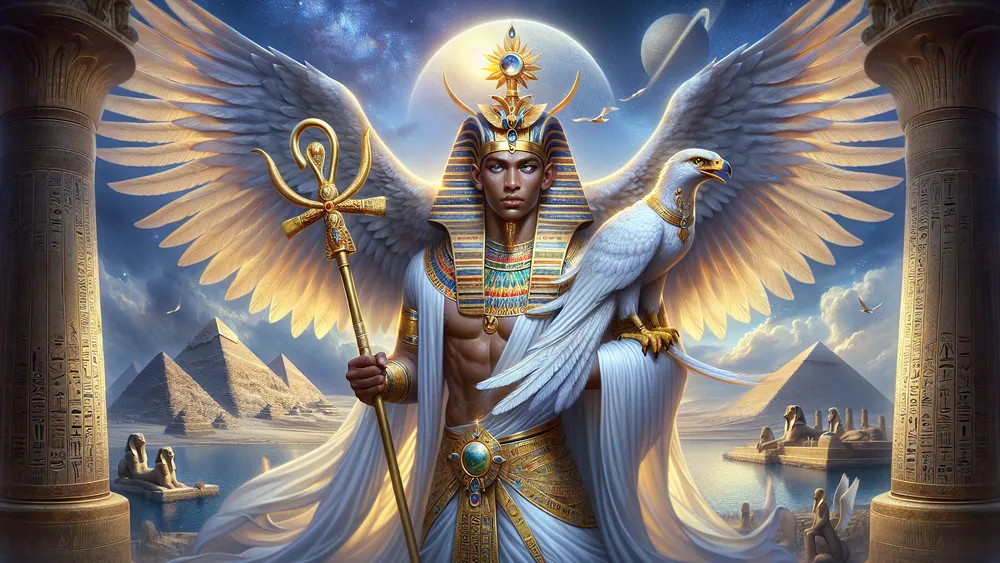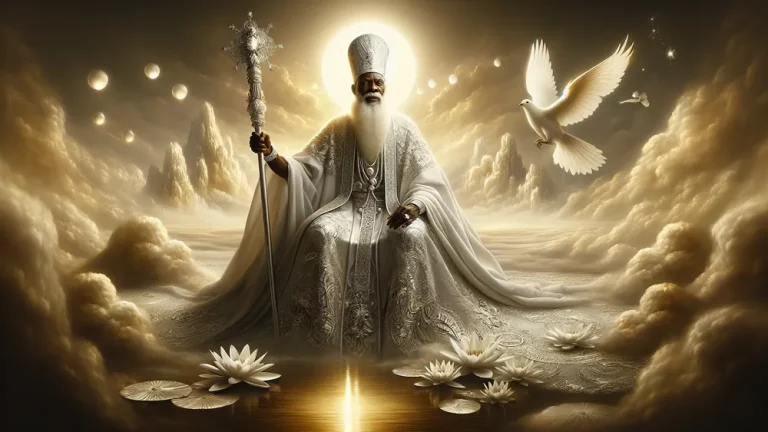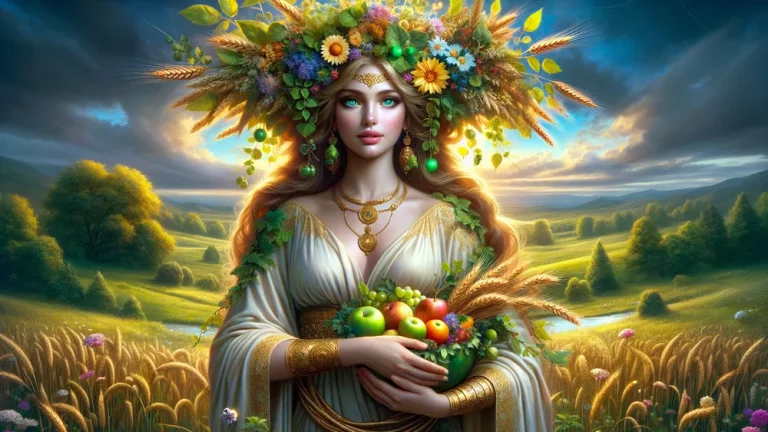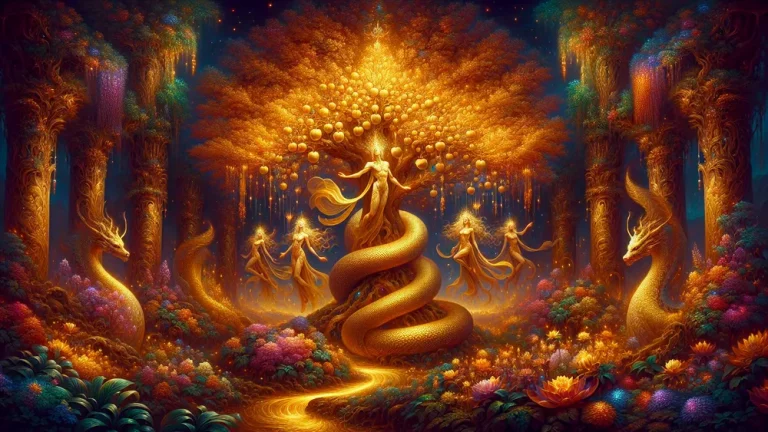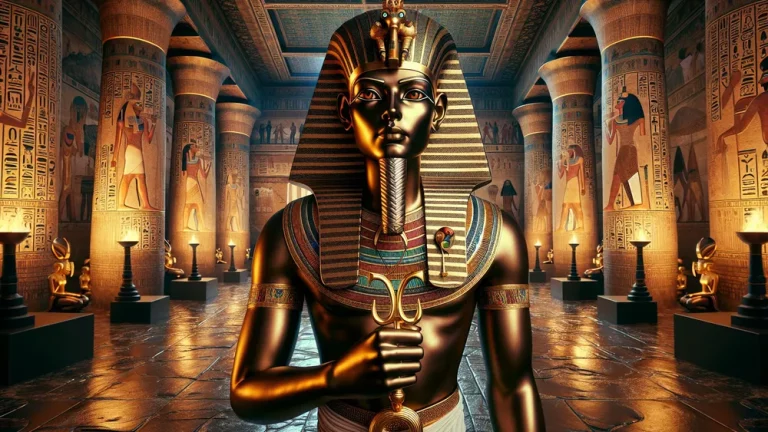Sahu: Ancient Egyptian Concept Of The Incorruptible Soul
Welcome to our look into Sahu, the old Egyptian god of the soul that cannot decay. Egyptian stories which are rich in tradition, have Sahu, which stays in a unique, interesting spot. Imagine a soul that is complex, made of different parts, each having a crucial role. Sahu that is eternal and changeless, not unlike the idea of an immortal spirit in other beliefs.
Key Points:
- Sahu is the ancient Egyptian god of the incorruptible soul.
- Sahu represents the eternal and unchanging part of the soul.
- Different from Ka and Ba, Sahu is the forever-living aspect of the soul.
- Rituals and offerings were done to honor Sahu and secure eternal life.
- Sahu is mentioned in Pyramid Texts and the Book of the Dead.
- Sahu’s significance lies in its role in achieving immortality in the afterlife.
Through this blog post, you will find the meaning of Sahu, how it compares with other parts like Ka and Ba, and its big role in giving forever life. There are historical mentions, religious meanings, and rituals that are tied to Sahu, offering complete knowledge about this unusual god.
For mythology fans, or those who are just curious, join in as we find out the secrets of Sahu and its lasting impact in old Egyptian ways.
Sahu: Overview and Key Facts
| Key Point | Description |
|---|---|
| Name | Sahu |
| Role | God of the incorruptible soul |
| Importance | Shows the eternal and unchanging part of the soul |
| Value in Culture | Key to old Egypt’s beliefs about afterlife and living forever |
| Unique from Ka and Ba | Ka is life force and Ba is personality, but Sahu is always living |
| Historical Mentions | Texts which include Pyramid Texts and Book of the Dead mention Sahu |
| Images in Art | Shown in art for funerals and writings |
| Connected Rituals | People did rituals to make sure the soul lives forever and respects Sahu |
| Findings in Archaeology | Tombs and temples had artifacts and inscriptions about Sahu |
| Meaning in Spirit | Means the unchanging and forever-lasting part of the soul |
| Myth Comparison | Like ideas of the always-living soul in other old cultures |
| Today’s Impact | Affects current spirituality and shows up in modern media |
Getting to Know Sahu in Ancient Egyptian Culture
Sahu’s role and its importance are better known by looking into ancient Egyptian beliefs and their ways. Thus, to really know Sahu and its meaning, old Egyptian ways that are about this interesting god need a closer look.
The Idea of Sahu
Sahu, in old Egyptian culture, is the part of the soul thought to live on forever and not change. Different from other parts, Sahu shows the unchanging and never-dying part that stays after death. They thought the soul was a complicated thing with many parts, each having its own role and importance.
Sahu was very important because it was believed to make sure the soul’s forever life, free from changing and breaking down. This idea is like the thought of a never-dying spirit in many other beliefs, where a piece of the person is believed to continue living. Different from other soul parts like Ka and Ba, Sahu stands out.
Ka is often named the life power or vital part that moves the body, while Ba is seen as the person’s character or self. But Sahu is the forever part that stays the same and doesn’t break down. In the next life, Sahu plays a big part in getting never-ending life.
The old Egyptians thought that with correct rituals and ways, the Sahu could be saved, making sure the soul would keep living in the afterlife. This idea shows the importance of Sahu in their religious ways, showing its role in the wish for living forever.
Sahu, a crucial part of the soul in ancient Egyptian beliefs, represents the unchanging aspect that ensures eternal life after death.
Historical Mentions of Sahu
Old writings from Egypt often talk about Sahu, especially the Pyramid Texts and the Book of the Dead. The Pyramid Texts go back to the Old Kingdom and count among the oldest holy writings in the world, with many mentions of Sahu. Written on pyramid walls, they were made to guide kings after death.
The Book of the Dead is a set of spells and sayings used from the New Kingdom onwards. It often names Sahu as a key part of the soul that must be kept safe to live forever. These writings give useful ideas about old Egyptian beliefs and their ways, highlighting why Sahu mattered in their spiritual thinking.
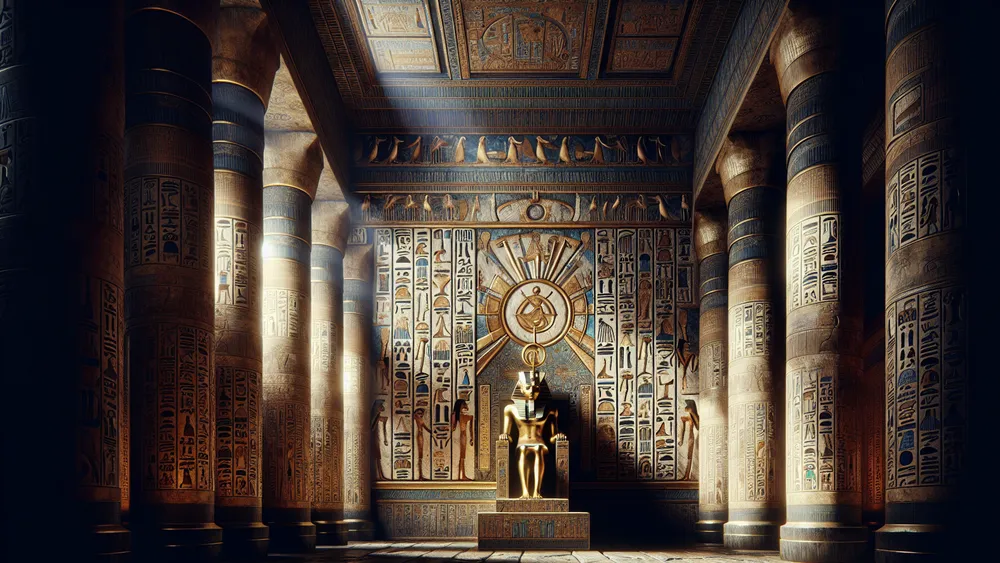
Besides text mentions, ancient Egyptian art and writings also show Sahu. Funerary art has images of Sahu, showing the soul’s forever and unchanging nature, and such images are found in tomb paintings, coffin decorations, and various things meant for the dead in the next life. Discoveries from digging have added to what we know about Sahu. Inscriptions and artifacts found in burial places and temples often include mentions of Sahu, showing how important it was for burial and rituals. Some key finds are:
- Tomb Inscriptions: Detailed talks about the soul’s journey and the part Sahu plays.
- Artifacts: Objects with spells and symbols about Sahu.
- Temple Reliefs: Art showing Sahu in religious acts.
These finds connect us to old beliefs about Sahu and its part in keeping the soul living forever.
The Spiritual Importance of Sahu
To know the spiritual meaning of Sahu gives a better idea of its place in old Egyptian ideas and ways of doing things.
Sahu and the Unchanging Soul
The idea of the forever soul was very important in old Egyptian spiritual thinking. Egyptians thought the soul had many parts, each with its own role and importance. Of these, Sahu was seen as the part that stayed forever and did not change, free from the decay and breaking down that hit the body.
This belief in a soul that does not change was crucial because it gave a sense of ongoing life and never-ending existence, ensuring that the core of a person would go on living.
The idea of a soul that stays the same can be compared to the idea of a never-dying spirit in many other beliefs, where part of the person is thought to go beyond physical death and keep on living. Sahu specifically shows this forever and unchanging part of the soul.
Different from parts like the Ka, which is the life force, or the Ba, which means the person’s character, Sahu is the part that stays the same and does not change. This difference is important because it shows the special role of Sahu in the next life.
Egyptians thought that with the right rituals and ways, the Sahu could be kept safe, ensuring the soul’s never-ending life. This idea is not only found in old Egyptian thoughts; similar ideas exist in other old cultures too. For example, in old Greek stories, the idea of the “aetherial body” is like Sahu, showing a forever and holy part of the soul.
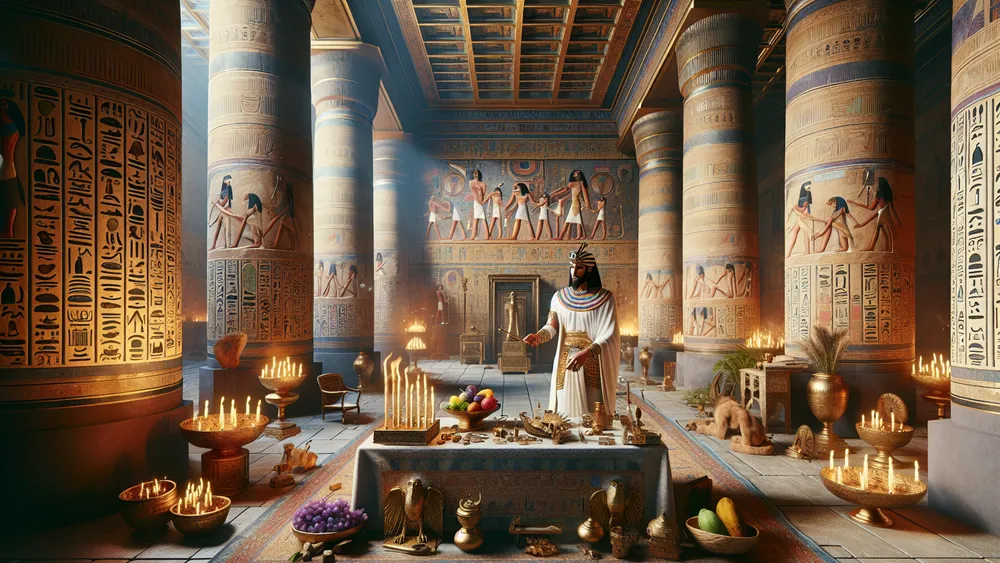
Also, in Hinduism, the “Atman” is seen as the forever self that goes beyond physical life. These comparisons show the common idea of a soul that does not change, highlighting its importance in different beliefs and religions.
Rituals and Traditions Tied to Sahu
Ancient Egyptians did many things to honor Sahu and make sure the soul lived forever. This included big funeral events where they gave food, drink, and valuable things to the dead person. Priests would say special spells from holy writings like the Book of the Dead. These spells were meant to ask for the help of gods and make sure the Sahu stayed safe.
Another important thing they did was mummification. This was about keeping the body so that the Sahu could find it and stay with it in the next life. These rituals were not only about respecting the dead but were key beliefs to make sure the soul’s never-ending journey stayed on track.
Without these rituals, the Sahu might be lost or get messed up, risking the soul’s forever life. By doing these things, they aimed to keep the Sahu’s wholeness, letting it stay the same and live forever. This idea is like things done in other old cultures, like how the old Greeks gave offerings to gods to ensure a good afterlife or how Hindus do rituals to honor ancestors for a calm move to the next life. Here is a table showing main rituals, their reasons, and the gods linked to them:
| Ritual | Purpose | Associated Deities |
|---|---|---|
| Funerary Offerings | To provide food and drink for the dead | Osiris, Anubis |
| Recitation of Spells | To guard and help the soul | Thoth, Isis |
| Mummification | To keep the body for the Sahu | Anubis |
| Tomb Inscriptions | To record the soul’s steps and spells | Osiris, Ra |
These ways and their linked actions show the deep meaning of Sahu in old Egyptian spiritual thinking, making sure the soul could live forever with no end.
Sahu in Stories and Beliefs
Looking at what Sahu does in Egyptian stories and holy writings gives a better idea of its importance in old myths and religious practices.
Sahu in Egyptian Legends
In Egyptian stories, Sahu is important as the part of the soul that doesn’t rot. This part of the soul shows up in many tales and stories that talk about the never-ending afterlife. For example, there’s the story of Osiris, the god of the next life, who is linked with keeping the Sahu safe.
The story goes that Osiris was killed by his brother Set and later brought back to life by his wife, Isis. His coming back to life stands for the never-ending part of the soul, with Sahu being the part that stays the same and doesn’t die.
This story shows that with the right rituals and help from the gods, Sahu can stay safe, and the soul can live forever. Sahu’s connection with other gods is also important in Egyptian stories. For instance, Anubis, the god who deals with mummies and the afterlife, is often shown as the one who protects the Sahu.
Anubis makes sure the body is kept safe so that Sahu can find and stay with it in the next life. Also, Thoth, the god of knowledge and writing, is believed to have written down the spells needed to protect the Sahu. These gods all work together to keep the Sahu safe, showing how important it is in Egyptian religious beliefs.
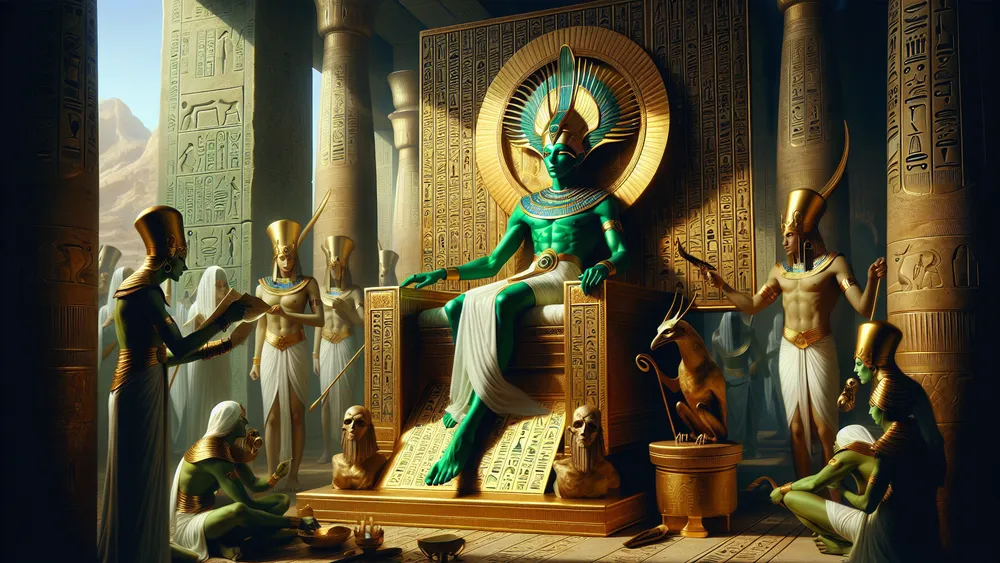
Understanding these connections helps us see how Sahu was part of the godly and story framework of ancient Egypt.
Sahu, the part of the soul that doesn’t decay, is crucial in Egyptian beliefs as it symbolizes eternal life and is safeguard by gods like Osiris, Anubis, and Thoth to secure everlasting existence.
Sacred Texts and Sahu
There are two important holy writings, the Pyramid Texts and the Book of the Dead, which mention Sahu. The Pyramid Texts, written on pyramid walls from the Old Kingdom, have spells meant to keep the king’s soul safe and help it go to the afterlife. In these writings, Sahu is talked about as the part of the soul that must be kept safe to get never-ending life.
Also, the Book of the Dead, a set of burial spells from the New Kingdom, mentions Sahu many times. These writings give exact steps on how to keep Sahu safe through rituals, offerings, and saying the right spells, showing how important it is for the journey to the afterlife. Showing Sahu in these holy writings underlines its importance in religious acts.
For example, in the Pyramid Texts, Sahu is shown as a must-have part of the soul that needs godly help and right rituals to stay safe. The spells are meant to ask for help from gods like Osiris and Anubis, making sure Sahu stays clean.
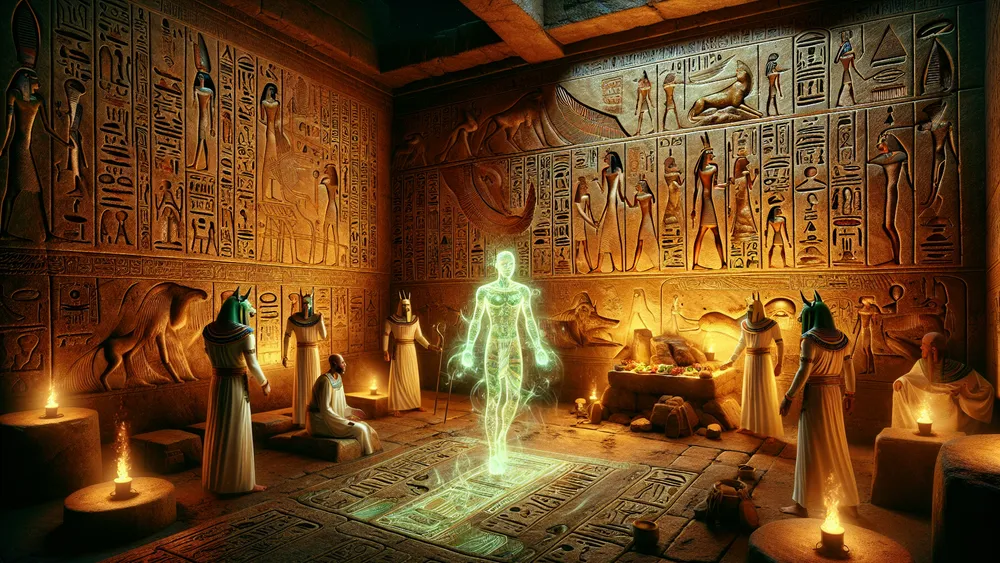
In the Book of the Dead, the focus on keeping Sahu safe is clear with detailed talks about the rituals and offerings needed to keep its wholeness. These writings act as a guide for the living to make sure that the dead person’s Sahu is kept, letting the soul get never-ending life.
Understanding the role of Sahu in these texts helps us see its deep importance in old Egyptian spiritual beliefs and how it affected their religious acts.
The Nine Parts of the Human Soul According to Ancient Egyptians
If we want to really understand the importance of Sahu, it is needed to know how it belongs in the bigger picture of the nine parts of the human soul in ancient Egyptian beliefs.
A Look at the Nine Parts
In ancient Egyptian beliefs, the human soul was thought to be made up of nine different parts. They all had their own special traits and roles. These parts are: Ren (the name), Ba (the personality), Ka (the vital essence), Ib (the heart), Sheut (the shadow), Akh (the immortal self), Sahu (the incorruptible soul), Sekhem (the power), and Khat (the physical body).
Each part was really important in life and after life. For example, the Ren was thought to be the true name of a person. This name was essential for their identity and after life survival. Meanwhile, Ba was the personality and it could travel between the world of living and the afterlife. Ka was the vital essence, and it needed food through offerings.
The connection between these parts was key to how ancient Egyptians saw the afterlife. They thought that for the soul to live forever, all nine parts needed to be kept safe and in harmony. Like a complex machine, every part had to work correctly for the whole system to function.
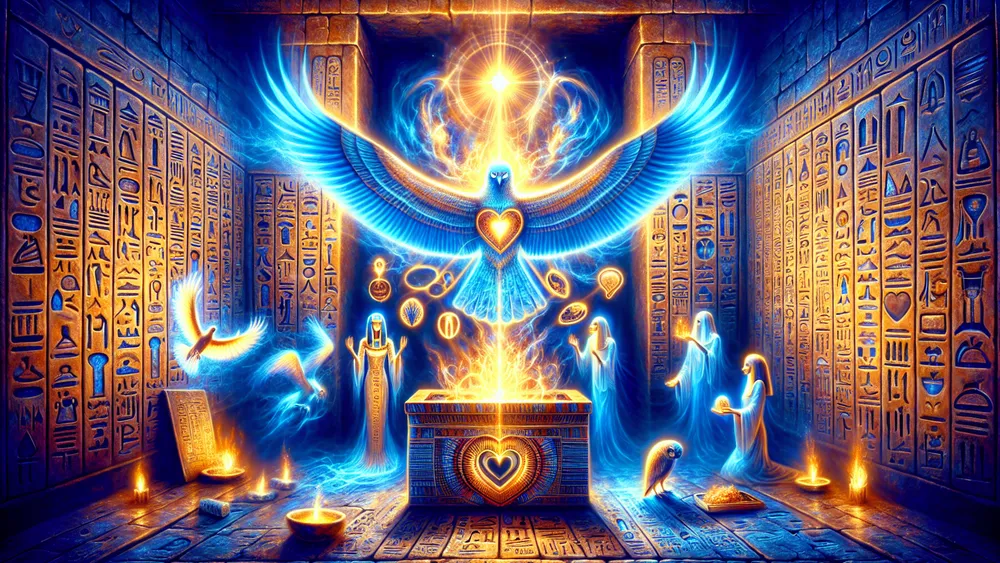
The Akh was the glorified self that only appeared if the other parts were taken care of properly. The Sahu, as the unchanging soul, stood for the everlasting part, ensuring the soul’s immortality. Rituals, spells, and offerings in texts like the Pyramid Texts and the Book of the Dead were meant to protect and maintain these parts.
They helped the individual navigate the afterlife well. Understanding how these parts depended on each other, we can see the intricate and whole nature of ancient Egyptian spirituality.
Deep Jump into Each Part
The ancient Egyptians thought that the human soul was made up of nine different parts, and they all had their own special traits and jobs.
The Ren, or the name, was thought to be essential for one’s identity and keeping alive in the afterlife; it was thought that as long as a person’s name was spoken, they would keep on living. The Ba stood for the personality and was shown as a bird with a human head, able to go between the living world and the afterlife.
The Ka was the life force that needed food through offerings. The Ib, or heart, was where emotion, thought, and intention were seated, and it was weighed against the feather of Ma’at to check one’s worthiness in the afterlife. The Sheut, or shadow, was thought to be a key part of a person, showing their presence and safety.
Among these parts, the Akh was the changed and glorified self that could only appear if the other parts were kept right. The Sahu, as the unchanging soul, stood for the eternal piece, making sure the soul lived forever. The Sekhem was the part of power and strength, often linked with the godly energy that brought the soul to life.
Last, the Khat was the physical body, which needed to be kept through mummification to give a home for the soul in the afterlife. The deep importance of Sahu among these parts is big since it represents an unchanging and forever soul, vital for gaining immortality.
By knowing the special traits and roles of each part, we can see the detailed and complete nature of ancient Egyptian spirituality and their thorough approach to the afterlife.
How Sahu Lives on Today
When we know the ancient idea of Sahu, it gives an interesting way to look into its lasting impact in modern times.
Sahu in Modern Times
The idea of Sahu, the unchanging soul, is in modern culture and spirituality. It often shows the quest for eternal truth and purity. In modern-day writing, Sahu is sometimes mentioned in works that look at ideas of immortality and the afterlife, drawing links between ancient beliefs and modern existential questions.
For example, in some fantasy books, characters may try to reach a state of unchanging, like the ancient Egyptian Sahu. In art, the symbols of Sahu are in pieces that show the soul’s journey and change, often using pictures inspired by Egyptian images. Media, like movies and TV shows, sometimes include parts of Egyptian myths, with Sahu being the final goal of spiritual understanding and living forever.
Therefore, knowing these modern mentions helps us see how the old idea of Sahu still pushes and shapes modern-day thought and creativity.
Research on Sahu Today
Recent studies have examined the idea of Sahu and showed its importance in ancient Egyptian culture. Scholars have used new archaeological techniques and different methods to find out more about how Egyptians saw the unchanging soul. For example, recent research looked at the language details of old texts and revealed more about the exact rituals and beliefs tied to Sahu.
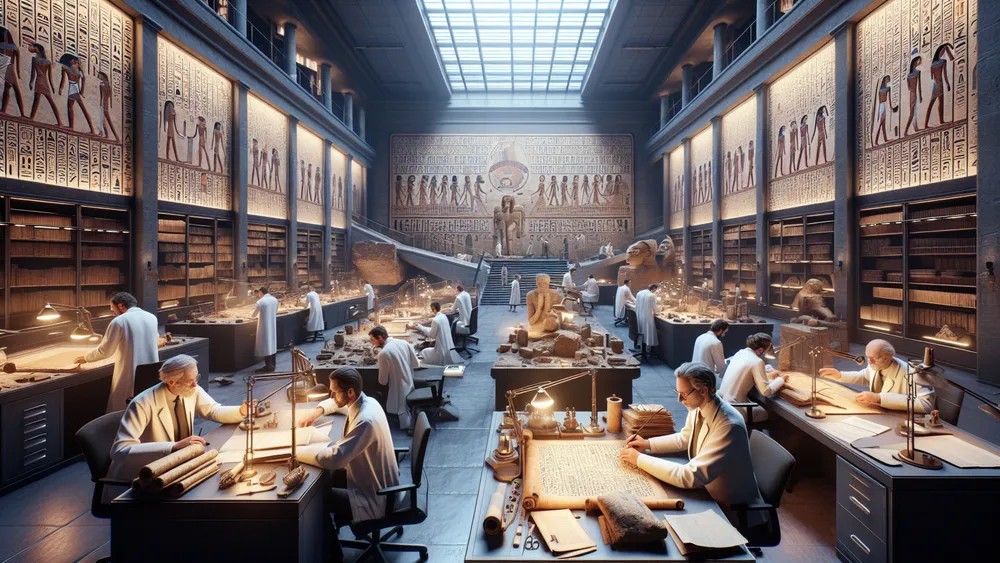
New ideas suggest that Sahu was not just a symbol of living forever but also showed moral and spiritual integrity, which reflects the Egyptians’ focus on good living. These insights help us understand the complex ties between religion, morality, and the afterlife in ancient Egypt, like how modern science keeps improving our knowledge of the natural world.
By looking at these modern studies, we get a deeper and more detailed view of Sahu’s place in the spiritual world of ancient Egypt.
FAQs
1. What is the significance of Sahu in ancient Egyptian culture?
The significance of Sahu in ancient Egyptian culture lies in its representation of the incorruptible and eternal aspect of the soul, crucial for achieving immortality in the afterlife.
2. How does Sahu differ from other parts of the soul like Ka and Ba?
Sahu differs from other parts of the soul like Ka and Ba in that it represents the incorruptible and eternal aspect of the soul, whereas Ka is the vital essence and Ba is the personality or individuality.
3. What rituals were performed to honor Sahu?
Rituals performed to honor Sahu often involved elaborate ceremonies and offerings to ensure the soul’s immortality and incorruptibility.
4. How is Sahu depicted in ancient Egyptian art and literature?
Sahu is depicted in ancient Egyptian art and literature as a glorified, eternal aspect of the soul, often associated with the stars and the afterlife.

